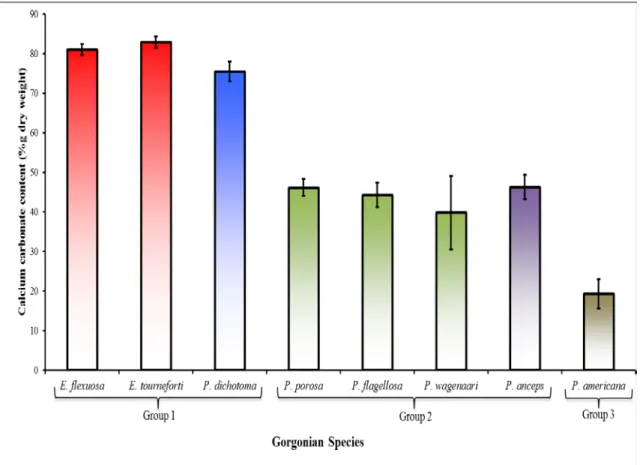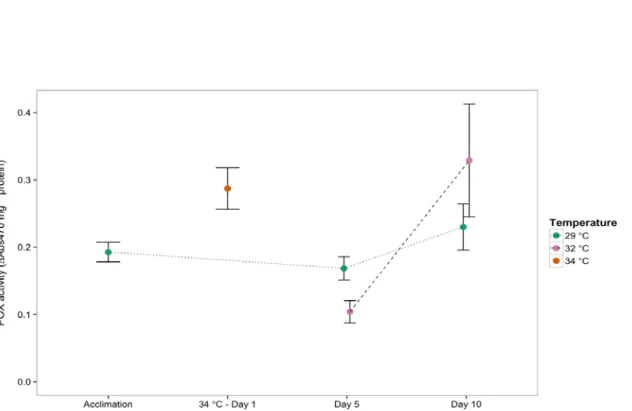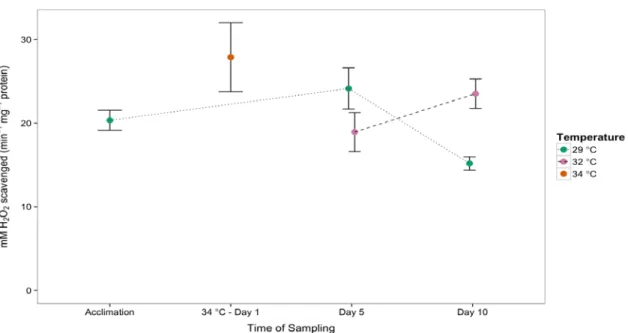Thanks to Unidad Académica de Sistemas Arrecifales (Puerto Morelos), Instituto de Ciencias del Mar y Limnología, Universidad Nacional Autónoma de México, who hosted the field part of the project. HADLEY PEARSON: Octocoral physiology: calcium carbonate composition and the effect of heat stress on enzyme activity. Octocorals produce sclerites: calcium carbonate crystals that serve as the skeletal elements of corals.
Octocorals serve as an environment for Symbiodinium spp., the unicellular dinoflagellate algae that engage in a mutualistic relationship with their octocoral hosts. They have specific shapes, sizes and patterns (Figure 1.1) in different layers of octocoral tissue: axis, axial sheath and layers of the coenenchyma. Octocoral sclerites are made of calcite, one of three naturally occurring crystalline forms of calcium carbonate (CaCO3) (Velimorov and King 1979).
Most of the calcium (Ca) used in sclerite formation is obtained directly from the environment and transported by axial epithelial cells (Kingsley 1987). Surface ocean seawater pH has already dropped by 0.1 pH units and is projected to decrease by an additional 0.3–0.4 pH units by the end of the century (Bramanti 2013). Fifty-six octocoral colonies were sampled from a patch reef located within 50 m of the UNAM pier.
All samples, from the eight octocoral species, were sampled from the same depth.

THERMAL STRESS
Through a set of cascade reactions, the change in fluidity can lead to photoinhibition by damage to photosystem II, causing an increase in the production of reactive oxygen species (ROS) such as hydrogen peroxide and superoxide radicals (Lesser 2006, Flores-Ramírez & Liñán-Cabello 2007, Suggett et al. 2008). In a study of seven free-living Symbiodinium types, the B1 type was found to have one of the lowest productions of ROS at basal temperature (26°C), but had one of the highest at elevated temperatures of 31°C ( McGinty 2012). Here, we investigated the response of a single species of gorgonian, Pterogorgia anceps, to thermal stress.
Branches were maintained across treatments and one branch was collected after both five and 10 days, frozen in liquid nitrogen and stored at -70°C. POX activity was calculated as the change in absorbance (min-1) in 10 min, normalized to mg protein present in the sample. made with PBS, pH 7.0), and the absorbance at 240 nm was recorded every minute for a period of 30 minutes. Branches exposed to 34°C were sampled three days after the last day of acclimation, and four days before the next sampling of the control branch (29°C on day 5).
Conversely, exposure to 32°C after five days led to a significant decrease in POX activity by 29% compared to POX activity in branches at ambient day 5 (C4: P < 0.001). Branches exposed to 34°C had the highest mean concentrations of the enzyme and the highest variability of all treatments. In the ambient (29°C) and 32°C elevated temperature treatments, significant differences were observed between treatments on the tenth day: the control arm showed significant variation between previous control days and Day 5 samples at 32°C.
As catalase is light sensitive (Lesser 2006), variation in sunlight levels on the day of sampling may account for the significant reduction seen on Day 10 in the control branches. The large standard error seen in the data at 34°C for both enzymes and for 32°C Day 10 for peroxidase indicated a variable response between P . Although the levels may vary, the trend is consistent: enzymatic activity increased in response to thermal stress.
Furthermore, the maximum photochemical efficiency of the branches decreased significantly over time for the 32°C treatment, up to 60% on the tenth day after acclimation (Ramsby, pers. comm.). These data, in combination with the increased concentrations of both POX and CAT on the tenth day of 32°C found in my study, are consistent with the fact that the octocorale... responds to thermal stress by attempting to 1) enzymatically eliminate the dangerous quenching ROS, and 2) eliminating the major source of ROS by expelling the thermally stressed, ROS-producing symbionts. This conclusion is further supported by the ten-day exposure to 32°C, after which the density of Symbiodinium cells was significantly lower compared to controls, while the thermal stress of the 34°C treatment caused faster expansion of Symbiodinium and more rapidly increasing enzyme levels. (Ramsby, pers. comm.). In contrast, the net photosynthetic rate per remaining Symbiodinium cell was significantly greater than control levels after 10 days at 32°C (Ramsby, pers. comm.).
There was also a non-significant increase in the ratio of photosynthesis to respiration (Ramsby, pers. comm.). This reduction in the number of symbionts, together with the production of ROS-neutralizing enzymes, eliminated the immediate threat of ROS.

CONCLUSION
LIST OF REFERENCES
Alker AP, Kim K, Dube DH, Harvell CD (2004) Localized induction of a general response against multiple biotic agents in Caribbean sea fans. Bayer FM (1961) The shallow-water Octocorallia of the West Indian region: A manual for marine biologists. Glob Change Biol Cairns S (1977) Guide to the Commoner Shallow-Water Gorgonians of South Florida, the Gulf of Mexico and the Caribbean Region.
Clavico EEG, de Souza AT, da Gama BAP, Pereira RC (2007) Anti-predator defense and phenotypic plasticity of the sclerite from Renilla muelleri, a tropical octopus. Flores-Ramírez LA, Liñán-Cabello MA (2007) Relationships between thermal stress, bleaching and oxidative damage in the hermatypic coral, Pocillopora capitata. Gardner TA, Côté IM, Gill JA, Grant A, Watkinson AR (2003) Long-term region-wide declines in Caribbean corals.
Gómez CE, Ritson-Williams R, Langdon C, Paul VJ, Sánchez JA (2010) Octocoral calcification in a high CO2 world. Jamison JL, Lasker H (2008) Identification of octocoral recruits using microsatellite primers: Relationship between recruitment and adult distribution of. Kleppel GS, Dodge RE, Reese CJ (1989) Changes in pigmentation associated with bleaching of stony corals.
Mydlarz LD, Couch CS, Weil E, Smith GW, Harvell Catherine D (2009) Immune defense of healthy, bleached and diseased Montastraea faveolata during a natural bleaching event. Mydlarz LD, Jacobs RS (2006) An inducible release of reactive oxygen radicals in four species of gorgonian corals. Nii CM, Muscatine L (1997) Oxidative stress in the symbiotic sea anemone Aiptasia pulchella (Carlgren, 1943): Contribution of the animal to superoxide ion.
O'Neal W, Pawlik JR (2002) A reassessment of the chemical and physical defenses of Caribbean gorgonian corals against predatory fish. Pandolfi JM, Jackson JBC, Baron N, Bradbury RH, Guzmán HM, Hughes TP, Kappel CV, Micheli F, Ogden J, Possingham H, Sala E (2005) Are American coral reefs on the slippery slope to slime. Ruzicka R, Colella M, Porter J, Morrison J, Kidney J, Brinkhuis V, Lunz K, Macaulay K, Bartlett L, Meyers M, Colee J (2013) Temporal changes in benthic assemblages on Florida Keys reefs 11 years after 1997/1998 El Nino.


